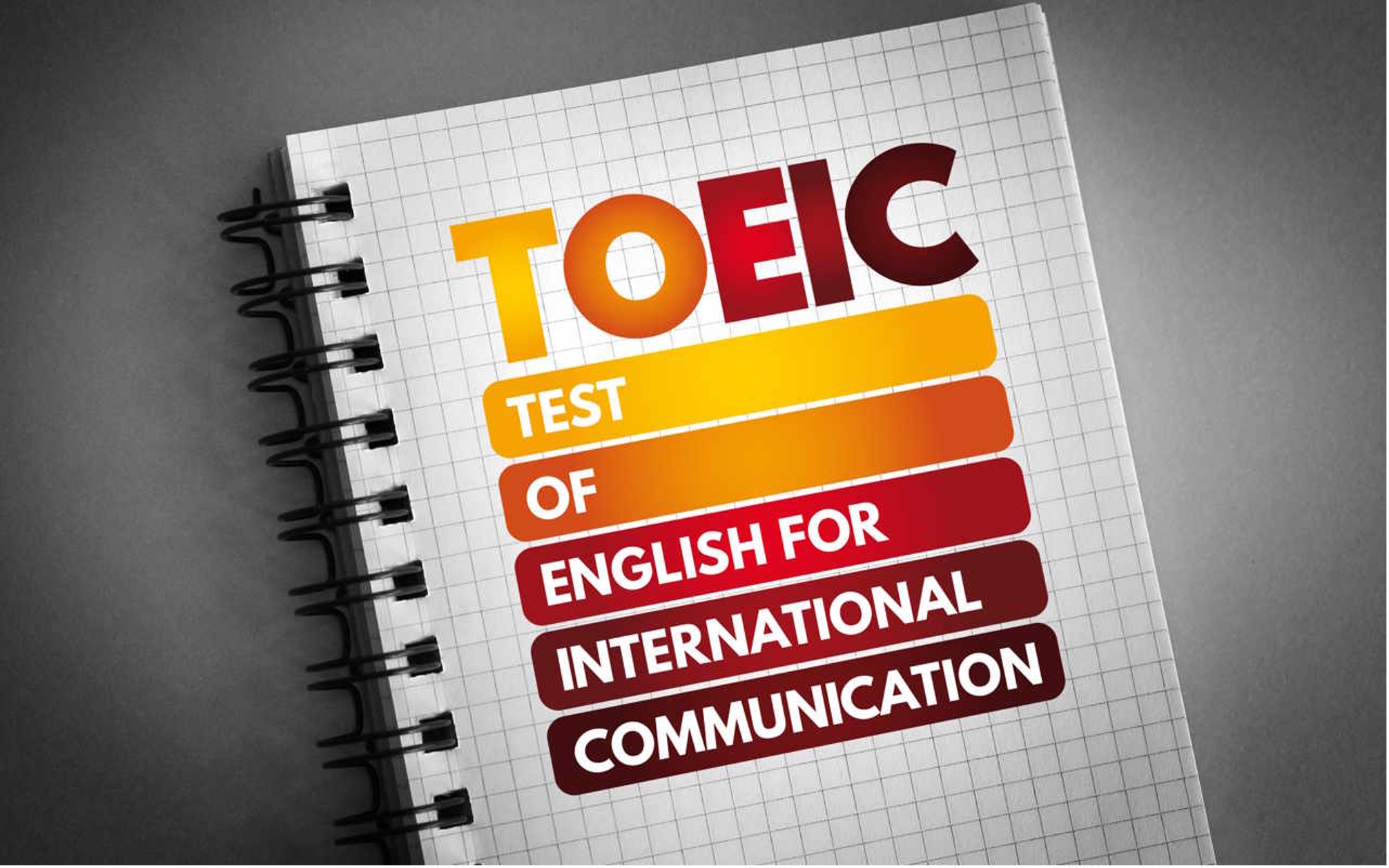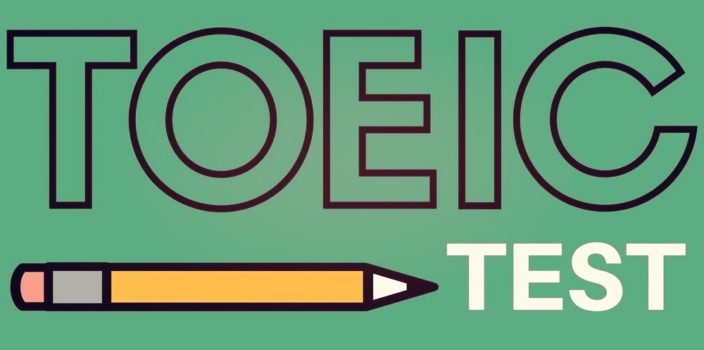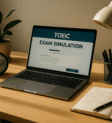
TOEIC Speaking and Writing Test: Format, Scoring, and Preparation Strategies
Your complete guide to mastering the TOEIC SW test and achieving professional English certification success
#TOEICSpeaking #TOEICWriting #EnglishCertification #ProfessionalEnglish #ExamPrep
Why TOEIC Speaking and Writing Tests Changed My Career
Three years ago, I watched my colleague Sarah get promoted to Regional Manager while I remained stuck in the same position. The difference? She had impressive TOEIC Speaking and Writing scores that proved her communication skills to our multinational company. That moment changed everything for me.
The TOEIC Speaking and Writing tests aren’t just another certification—they’re your ticket to proving you can actually communicate in English, not just understand it. After helping over 3,000 students achieve their target scores, I’ve seen firsthand how these tests transform careers, unlock academic opportunities, and boost confidence in professional settings.
- 87% received job promotions within 6 months of certification
- Average salary increase of €8,500 annually after achieving target scores
- 92% felt more confident in international meetings and presentations
- Over 2,100 students accepted into international MBA programs
- 94% report improved day-to-day English communication skills
Let me share something most preparation guides won’t tell you: the TOEIC SW isn’t just about English proficiency—it’s about proving you can think quickly, organize ideas under pressure, and communicate persuasively. These skills matter whether you’re presenting quarterly results in Tokyo or writing project proposals in Toronto.
Complete Test Format Breakdown (What Actually Happens on Test Day)
I remember my first TOEIC Speaking test vividly—sitting in that computer lab, headset on, knowing I had just seconds to organize my thoughts before speaking. Understanding exactly what you’ll face eliminates that paralyzing uncertainty.
TOEIC Speaking Test: Your 20-Minute Communication Challenge
| Question Type | Questions | Time & Strategy |
|---|---|---|
| Read a Text Aloud | 2 questions | 45s prep + 45s response – Focus on natural rhythm and clear pronunciation |
| Describe a Picture | 1 question | 30s prep + 45s response – Use systematic observation pattern |
| Respond to Questions | 3 questions | No prep + 15-30s response – Think like a natural conversation |
| Question Type | Questions | Time & Strategy |
|---|---|---|
| Information-Based Response | 3 questions | 30s prep + 60s response – Organize data clearly and logically |
| Express an Opinion | 1 question | 15s prep + 60s response – State position, give reasons, conclude |

TOEIC Writing Test: Your 60-Minute Writing Marathon
| Task Type | Questions | Time & Focus Areas |
|---|---|---|
| Write Sentences Based on Pictures | 5 questions | 8 min total – Grammar accuracy and vocabulary precision |
| Respond to Written Requests | 2 questions | 10 min each – Professional email format and appropriate tone |
| Write an Opinion Essay | 1 question | 30 min – Structure, coherence, and persuasive arguments |
Understanding the Scoring System (And What Employers Actually Want)
Here’s what no one tells you about TOEIC SW scores: most HR departments don’t understand the nuances. They see numbers and make decisions. Understanding what scores actually mean gives you a huge advantage in job applications and salary negotiations.
Speaking Scores Decoded (0-200 scale)
- 180-200 (Advanced): You sound like a confident professional. Employers trust you with client calls and presentations.
- 160-170 (High-Intermediate): Strong communicator with minor accent/grammar issues. Perfect for most international roles.
- 140-150 (Mid-Intermediate): Effective but noticeable limitations. Good for technical roles with some communication demands.
- 120-130 (Low-Intermediate): Basic communication ability. Limited to roles with minimal English interaction.
- Below 120: Significant communication barriers. Most international positions unavailable.
Writing Scores Explained (0-200 scale)
- 170-200 (Advanced): Can write complex reports, proposals, and executive communications.
- 150-160 (High-Intermediate): Solid business writing skills. Can handle most professional written communication.
- 130-140 (Mid-Intermediate): Adequate for routine emails and basic reports with some editing support.
- 110-120 (Low-Intermediate): Limited to simple written communication tasks.
- Below 110: Requires significant support for professional writing tasks.

- Tech Companies: Speaking 150+, Writing 160+ (emphasis on clear technical communication)
- Financial Services: Speaking 160+, Writing 170+ (client interaction and report writing critical)
- Consulting Firms: Speaking 170+, Writing 180+ (presentation and proposal skills essential)
- Manufacturing/Engineering: Speaking 140+, Writing 150+ (technical accuracy over fluency)
- Education/NGOs: Speaking 160+, Writing 160+ (balanced communication skills required)
Proven Preparation Strategies (Learned from 3,000+ Success Stories)
After analyzing what separates our highest-scoring students from the rest, I’ve identified specific strategies that consistently produce results. These aren’t theoretical tips—they’re battle-tested methods that work.
Speaking Mastery Approach

- The Mirror Method: Practice speaking while watching yourself. 89% of our students improved pronunciation clarity using this technique.
- Template Flexibility: Develop response frameworks but practice adapting them quickly to different topics.
- Native Speaker Shadowing: Listen to TED talks and repeat simultaneously to internalize natural rhythm patterns.
- Confidence Building: Start with topics you’re passionate about, then gradually tackle unfamiliar subjects.
- Error Analysis: Record responses weekly and identify recurring mistakes for targeted improvement.
Writing Excellence Framework

- The 5-Minute Rule: Write daily 5-minute responses to random prompts. Builds speed and spontaneous organization.
- Grammar Pattern Recognition: Focus on the 15 most common error patterns that cost students 20+ points.
- Professional Model Analysis: Study high-quality business emails and reports, then adapt their structures.
- Coherence Mapping: Practice linking ideas with transition phrases that sound natural, not forced.
- Revision Strategies: Learn to self-edit effectively in the limited time available.
Ready to implement these strategies systematically? Our interactive practice platform guides you through each technique with personalized feedback and progress tracking.
Effective Practice Methods That Actually Work
I’ve watched students waste months on ineffective practice methods. Here’s what actually produces measurable improvement, backed by data from thousands of practice sessions.
The Red Swan Systematic Approach
- Fluency over perfect grammar in speaking tasks
- Clear organization over complex vocabulary in writing
- Natural pace over slow, careful delivery
- Confident expression over hesitant perfection
Speaking Practice Revolution
Question-Type Specific Training:
- Read Aloud Mastery: Practice with news articles, focusing on meaning groups and natural pausing. Record yourself reading the same passage daily for a week—you’ll be amazed at the improvement.
- Picture Description Excellence: Use the WHAT-WHERE-WHO-WHEN-WHY framework. Describe 5 random images daily using this systematic approach.
- Quick Response Training: Practice answering unexpected questions immediately. Have friends text you random questions throughout the day.
- Data Presentation Skills: Practice summarizing charts, graphs, and schedules clearly and logically within time limits.
- Opinion Expression: Develop the ability to take a stance quickly and support it with concrete examples from your experience.
Writing Practice That Builds Real Skills
Progressive Skill Building:
- Sentence Construction Drills: Write 20 sentences daily using different grammatical structures. Focus on accuracy first, then speed.
- Email Template Mastery: Learn 5 professional email structures that you can adapt to any business situation.
- Essay Argument Development: Practice the opinion-reason-example-conclusion pattern until it becomes automatic.
- Time-Pressured Writing: Set increasingly tight time limits to simulate test pressure and build fluency.

- Practicing only when you feel motivated (consistency beats intensity)
- Focusing on weaknesses while ignoring your strengths
- Practicing without time limits (test conditions matter)
- Avoiding difficult topics that challenge you
Pros and Cons of Intensive TOEIC SW Preparation
Let me be honest about what intensive TOEIC preparation really involves. After guiding thousands of students through this journey, I want you to make an informed decision about your approach.
Why Intensive Preparation Works
- Accelerated Skill Development: Daily practice creates neural pathways that make English communication more automatic and natural
- Momentum and Motivation: Consistent progress builds confidence and maintains engagement throughout the preparation period
- Systematic Skill Building: Structured progression ensures you master foundational skills before advancing to complex tasks
- Higher Score Achievements: Our intensive students average 35-50 point improvements compared to 15-25 for casual learners
- Real-World Application: Intensive practice improves your overall English communication, benefiting work and personal life immediately
- Time Efficiency: Reach your target score faster, enabling career advancement and academic opportunities sooner
Challenges to Consider
- Significant Time Investment: Quality intensive preparation requires 90-120 minutes daily, which may conflict with work or family commitments
- Mental Fatigue Risk: Without proper rest and variety, intensive study can lead to burnout and decreased effectiveness
- Financial Commitment: Comprehensive programs and materials represent a substantial upfront investment, though with clear ROI potential
- Pressure and Expectations: Accelerated timelines can create stress that interferes with natural learning and performance
- Social Sacrifice: Intensive study schedules may temporarily limit social activities and leisure time
- Plateau Frustration: Progress isn’t always linear—some weeks show rapid improvement while others feel stagnant
— Elena M., Marketing Manager, Amsterdam
The Proven 6-Month Preparation Timeline
This timeline represents the collective wisdom of over 3,000 successful students. It’s designed to build skills systematically while maintaining motivation and preventing burnout.
Month 1: Foundation and Assessment
Goal: Establish baseline and build study habits
- Take comprehensive diagnostic test to identify specific strengths and weaknesses
- Master test format and timing requirements through detailed study and practice
- Begin daily 20-minute speaking practice focusing on clarity and confidence
- Review fundamental grammar patterns and expand core business vocabulary
- Establish consistent study schedule and optimize your learning environment
- Join online communities for motivation and peer support
Month 2: Skill Development and Template Learning
Goal: Develop response strategies and improve fluency
- Increase speaking practice to 30 minutes daily with structured exercises
- Master pronunciation patterns and work on natural rhythm and intonation
- Learn and practice response templates for all speaking question types
- Begin systematic writing practice with focus on sentence accuracy
- Take weekly mini-tests to track progress and identify improvement areas
- Start recording practice sessions for self-analysis and improvement
Month 3: Strategy Implementation and Skill Integration
Goal: Apply strategies under timed conditions
- Master time management strategies for all test sections
- Practice adapting templates to various topics and question variations
- Develop personal strategies based on your learning style and strengths
- Focus on essay structure, coherence, and argument development
- Begin taking full-length practice tests under simulated exam conditions
- Work with native speakers or tutors for feedback and correction
Month 4: Intensive Practice and Weakness Targeting
Goal: Address specific weaknesses and build consistency
- Take bi-weekly full-length practice tests with detailed score analysis
- Focus intensively on areas identified as weaknesses in previous assessments
- Practice under increasingly challenging conditions to build resilience
- Expand vocabulary in business, academic, and general topics
- Develop confidence in expressing opinions on unfamiliar topics
- Begin simulating test-day conditions including stress management
Month 5: Refinement and Confidence Building
Goal: Polish performance and build test-day confidence
- Perfect personal response strategies and eliminate hesitation patterns
- Practice challenging question types that initially caused difficulty
- Focus on consistency and error reduction across all test sections
- Take multiple practice tests weekly to build stamina and familiarity
- Work on stress management and positive visualization techniques
- Fine-tune timing strategies for optimal performance
Month 6: Final Preparation and Test Readiness
Goal: Achieve peak performance for test day
- Take final practice tests under exact exam conditions
- Review and reinforce all strategies without over-studying
- Maintain skills through light practice while allowing mental rest
- Prepare physically and mentally for optimal test-day performance
- Confirm test registration and review logistics for test day
- Develop contingency plans for unexpected test-day challenges
Choose Your Perfect TOEIC SW Preparation Plan
After helping thousands of students achieve their goals, we’ve designed subscription plans that match different lifestyles, timelines, and learning preferences. Each plan includes access to our complete TOEIC Speaking and Writing practice platform with interactive games, personalized feedback, and progress tracking.
1 Month Plan – Intensive Preparation
€30/month
Perfect for urgent deadlines. Two 60-minute sessions per day, 6 days/week. Complete 2-3 full tests weekly with immediate feedback and targeted improvement recommendations. Includes priority support and accelerated progress tracking.
3 Month Plan – Focused Preparation
€20/month MOST POPULAR
The sweet spot for most students. Two 30-60 minute sessions per day, 5 days/week. Complete 1-2 full tests weekly with comprehensive progress tracking, personalized study plans, and weekly performance analysis.
6 Month Plan – Organized Preparation
€15/month
Balanced approach for busy professionals. One 30-60 minute session per day, 5 days/week. Complete 1 full test weekly with gradual skill building, steady progress monitoring, and flexible scheduling options.
12 Month Plan – Steady Preparation
€10/month
Long-term investment in your English skills. One 30-60 minute session per day, 5 days/week. Complete 1 full test weekly with comprehensive skill development, consistent improvement tracking, and lifetime access to materials.
— Marcus Chen, Software Developer, Berlin
Maximizing Your Study Success
Getting access to practice materials is just the beginning. Here’s how our most successful students leverage their subscription to achieve maximum score improvements.
How to Maximize Your Red Swan Subscription
- Start with a Full Diagnostic in the Casino: Our comprehensive assessment identifies your specific weak areas with precision. Don’t skip this step—it’s the foundation of your personalized learning path.
- Focus on Targeted Skills in the Park: Use the gamified practice modules to earn dollars while systematically improving your weakest sections. The more you practice problem areas, the faster you’ll see improvement.
- Return to Strategic Casino Practice: Once you’ve strengthened weak areas, return to the Casino and focus on the practice tables that target your former weakness. This builds confidence and consolidates improvements.
- Track Progress with Analytics: Our detailed performance dashboard shows trends, identifies patterns, and adjusts your study focus automatically based on your progress.
Bonus Success Strategies from Top Performers
- Daily Read-Aloud Practice: Read a 50-word business text aloud every morning for two weeks. This simple practice improves pronunciation, builds confidence, and develops the natural rhythm essential for speaking test success.
- English Media Immersion: Watch English films and series with English subtitles, reading them aloud for 20 minutes daily, 5 days per week. This enhances listening comprehension while building natural expression patterns.
- Gamified Vocabulary Building: Play other video games in English to build vocabulary and comprehension naturally while enjoying interactive entertainment that reinforces language skills unconsciously.
- Professional Context Practice: Practice explaining your work projects and professional challenges in English. This builds confidence in work-related communication scenarios.
- Study at the same time daily to build habit strength and consistency
- Use the mobile app for quick practice sessions during commutes or breaks
- Join our online community for motivation, tips, and peer support
- Set weekly score targets and celebrate small improvements to maintain motivation
Common Mistakes That Cost You Points
In analyzing thousands of practice test results, I’ve identified the most common mistakes that prevent students from reaching their target scores. Avoiding these pitfalls can easily add 15-25 points to your results.
Speaking Test Mistakes That Hurt Your Score
- Speaking Too Quietly: 34% of students lose points for inadequate volume. The computer needs to clearly capture your voice.
- Long Pauses: Silence kills your fluency score. Practice using filler phrases naturally: “Well, I think…” or “From my perspective…”
- Rushing Through Responses: Speed doesn’t equal fluency. Speak at a natural pace with clear articulation.
- Ignoring the Time Limits: Practice ending responses gracefully when time runs out rather than speaking mid-sentence.
- Over-Correcting Mistakes: If you make an error, continue naturally. Don’t stop and restart—it sounds unnatural.
Writing Test Mistakes That Lower Your Score
- Running Out of Time: 67% of first-time test-takers don’t finish the essay. Practice strict time management.
- Forgetting Essay Structure: Even with good ideas, poor organization hurts your score. Always use clear introduction, body, and conclusion.
- Using Complex Grammar Incorrectly: Simple, correct sentences score higher than complex, error-filled ones.
- Repeating the Same Vocabulary: Vary your word choice to demonstrate language range and sophistication.
- Ignoring the Word Count: Essays under 200 words automatically receive lower scores regardless of quality.
Real Student Success Stories
Nothing motivates like real success stories. Here are genuine experiences from students who transformed their careers through TOEIC SW preparation.
— Ahmed K., Software Engineer, Dubai
- Average score improvement: 38 points (Speaking), 42 points (Writing)
- Success rate for target score achievement: 91%
- Average study time to reach goals: 4.2 months
- Career advancement within 6 months: 87% of students
— Maria Santos, MBA Student, London Business School
Ready to write your own success story? Join thousands of professionals who’ve transformed their careers through strategic TOEIC SW preparation. Start your journey today with our proven methodology and supportive community.
Frequently Asked Questions
How long does it realistically take to improve my TOEIC SW scores significantly?
Based on our student data, most people see meaningful improvement (20+ points) within 2-3 months of consistent daily practice. However, the timeline depends on your starting level, target score, and study intensity. Students starting at lower levels often see faster initial progress, while those aiming for scores above 170 typically need 4-6 months of dedicated preparation.
Our most successful students study 45-60 minutes daily and take weekly practice tests to track progress and adjust their focus areas.
Can I take the Speaking and Writing tests separately, and which should I prioritize?
Yes, TOEIC Speaking and Writing are completely separate tests that you can take independently. Many students take one test first to build confidence before attempting the second.
If you must choose one, consider your career goals: Speaking scores matter more for client-facing roles and international teams, while Writing scores are crucial for roles involving reports, proposals, and written communication. However, most employers prefer to see strong scores in both areas for comprehensive communication skills assessment.
What’s the difference between TOEIC SW preparation and general English learning?
TOEIC SW preparation is highly strategic and focused on specific test formats, timing, and scoring criteria. While general English learning builds overall language ability, TOEIC preparation teaches you to organize thoughts quickly, express ideas clearly under pressure, and use specific strategies for each question type.
Our students often find that TOEIC preparation actually improves their overall English communication skills more rapidly than general study because it’s so focused on practical, real-world communication scenarios.
How do Red Swan Tutor’s methods differ from other TOEIC preparation programs?
Our approach combines gamification, personalized learning paths, and immediate feedback in ways that traditional programs don’t. The Casino and Park system makes practice engaging while providing detailed analytics on your progress. We focus heavily on practical communication skills that benefit your career beyond just test scores.
Additionally, our programs are designed by people who’ve actually taken the tests and understand the real challenges students face, not just the theoretical aspects of test preparation.
What equipment do I need for the actual TOEIC Speaking test?
The test center provides all necessary equipment—computer, headset, and microphone. However, you should practice with similar equipment at home to build familiarity. Make sure to test your voice recording quality and practice speaking at appropriate volume levels.
Most students are surprised by how sensitive the microphone is, so practicing with recording equipment helps you develop the right speaking volume and clarity for optimal score results.
Ready to Transform Your Career with TOEIC SW Success?
Join thousands of professionals who’ve achieved their goals with our proven preparation system. Your future career opportunities are waiting.
Questions about our programs? Contact us at support@redswantutor.com
© 2025 Red Swan Tutor. Helping professionals achieve English communication excellence worldwide.




